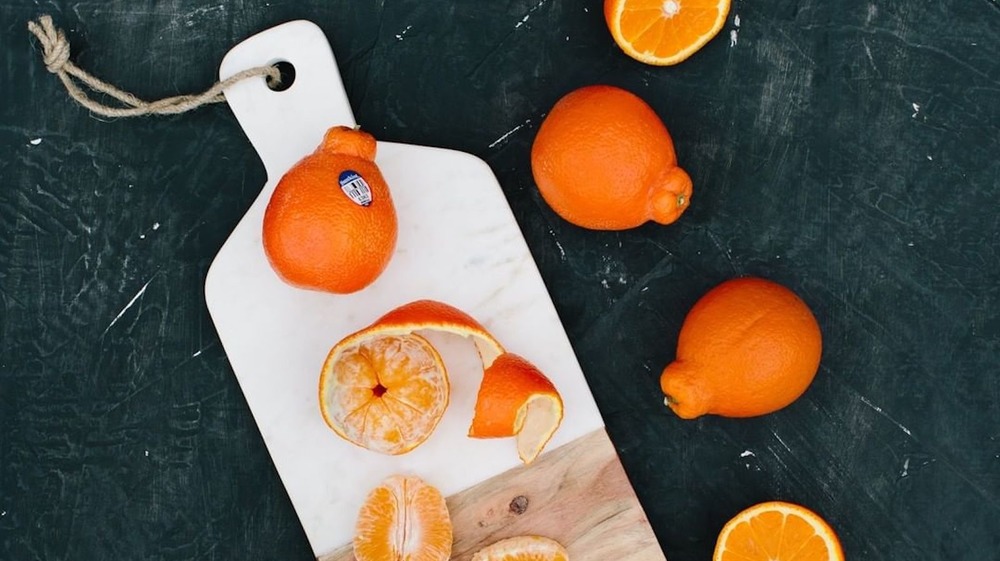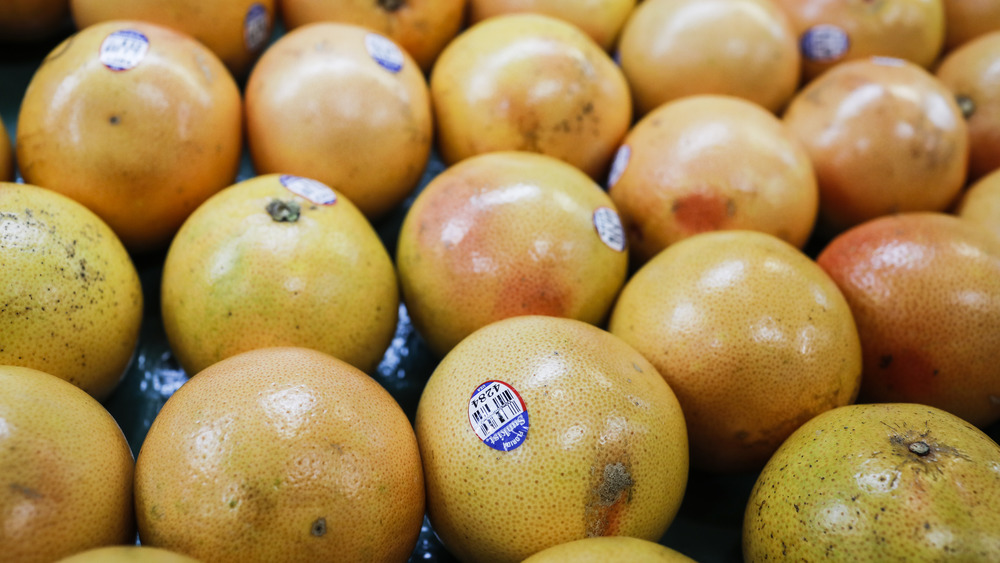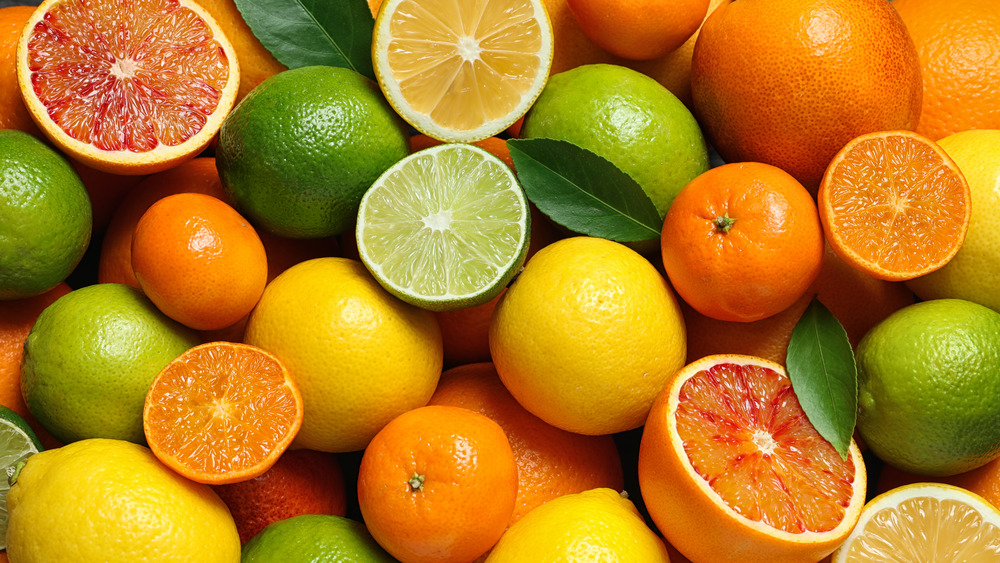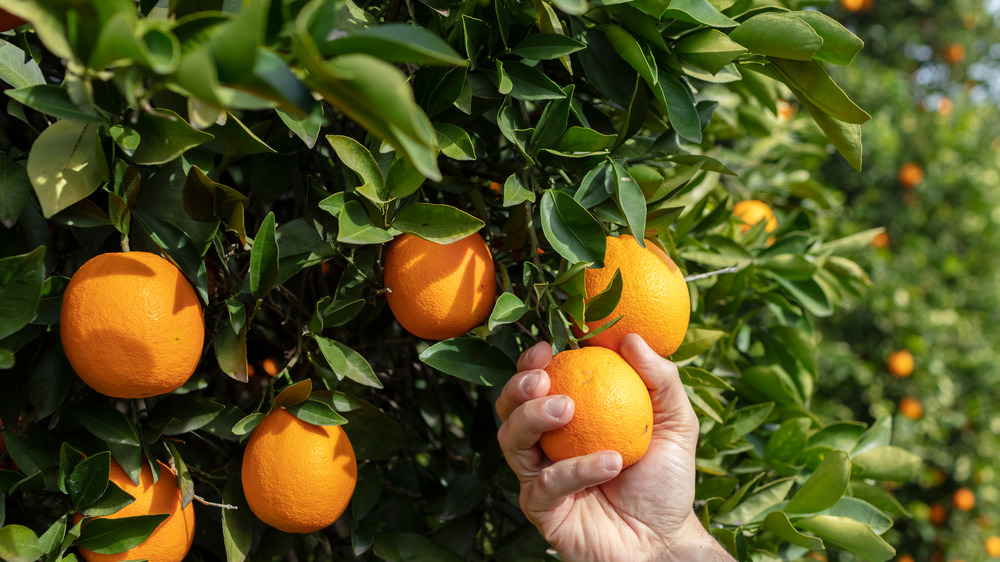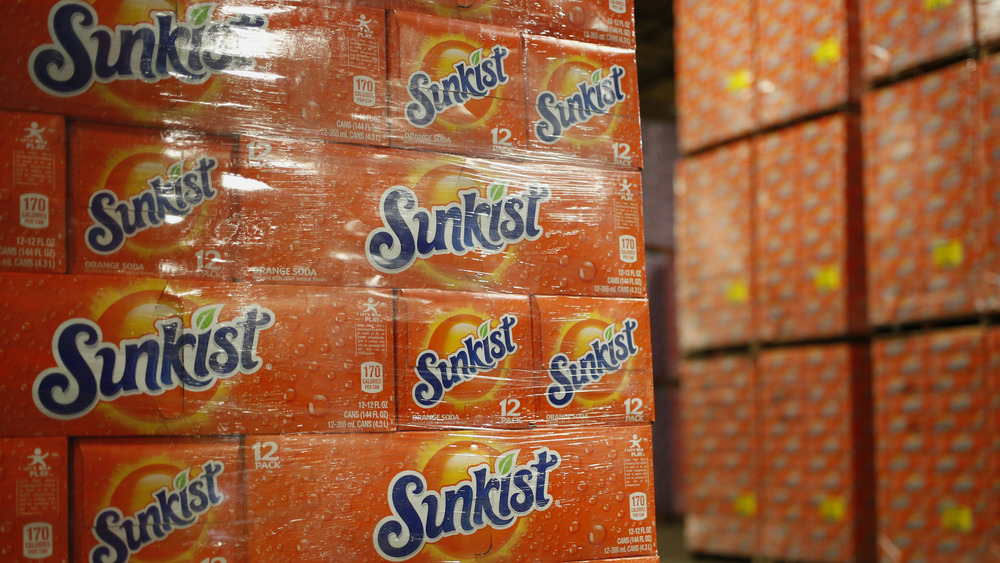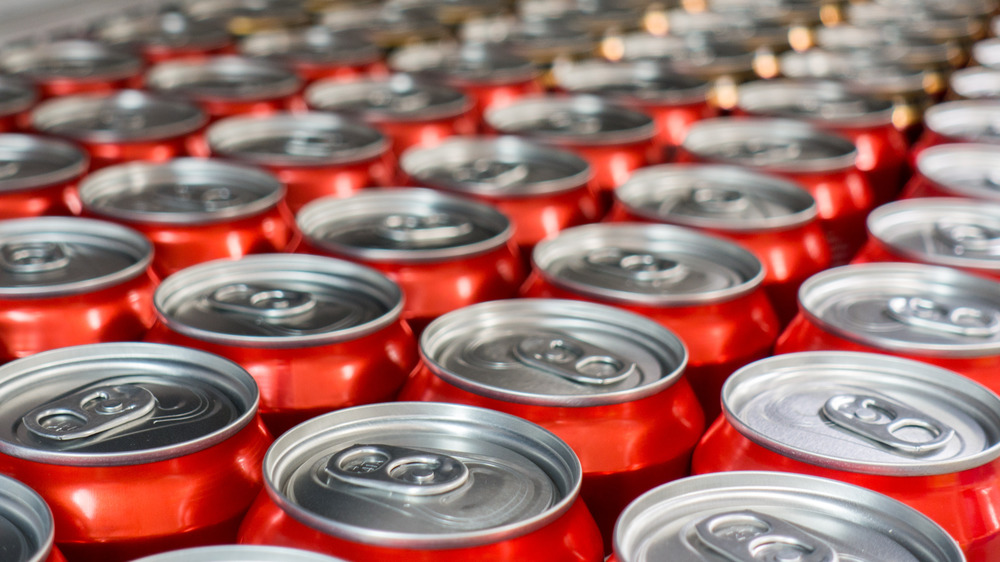What You Didn't Know About Sunkist
Strolling through the produce aisle in the grocery store, you may notice the bold blue Sunkist sticker plastered onto your favorite citrus fruits. And if you browse the soda aisle, you'll come across the Sunkist orange-flavored fizzy drink. It's clear that Sunkist Growers has been strategic with branding, advertising, and licensing its name (via The New York Times).
Founded in 1893, Sunkist Growers is a large farmer cooperative with headquarters in Valencia, California. Originally, it was named the Southern California Fruit Exchange because farmers came together to market its citrus crops to the public (via Sunkist). By 1905, 12 years later, the organization expanded throughout California prompting the need to change the name to California Fruit Growers Exchange to reflect that the citrus was grown throughout the state (via Sunkist). According to the brand, the name Sunkist Growers wasn't created until 1952.
Sunkist Growers is a company that has an important place in California farming history. Its diversification from growing citrus and licensing its name to other brands has helped it expand and grow as a company (via The New York Times). Today, Sunkist Growers cultivates a variety of citrus fruit, expanding how many farmers grow organically and are continually adding more sustainable business practices (via Sunkist).
Sunkist is a big citrus farming cooperative
Sunkist's cooperative is formed by Arizona and California farmers, who are members that collectively own and operate Sunkist Growers (via The Snack). Many farmers who grow citrus for Sunkist Growers have been farming for a long time, and a large portion of them are second-, third-, or even fourth-generation farmers (via Packer). Many citrus groves have been passed down from one generation to the next.
There are a variety of stipulations that farmers must meet to be part of the cooperative. Joining Sunkist Growers gives many farmers a guaranteed place to sell their crops, allows them to tap into international transportation systems, and assists with selling overseas, among other things (via Sunkist Growers). According to an article from the Rural Development sector of the U.S. Department of Agriculture, members of the cooperative are connected to packing houses and district exchanges, and prices are set by Sunkist Central.
Sunkist doesn't solely grow oranges
Under the Sunkist image, it's easy to think that oranges and mandarins are the only citrus that is grown. But Sunkist cultivates many types of citrus fruits including, lemons, limes, grapefruits, mandarins, tangelos, tangerines, and oranges. According to Sunkist, there are actually over 40 types of citrus varieties it grows.
Sunkist breaks down the types and seasons of some of its varieties on its site. Valencia oranges, favored for their perfect blend of tart and sweet, is one variety that is popular and in season in North America from July to October. Blood oranges are another common citrus, which get their name from the maroon hue inside. The peel is orange and they are in season from December to June.
The brand goes beyond conventional fruit, too. Christina Ward, director of global brand marketing for Sunkist Growers, told Packer, "Sunkist's portfolio of organic citrus includes in-season Valencia oranges, lemons, navel oranges, Cara Cara oranges, blood oranges, Minneola tangelos, and California Star Ruby grapefruit."
Sunkist focuses on sustainable practices
Because there are over 6,000 members who make up the cooperative and therefore many farms, not every farmer grows their fruit in the same way (via Sunkist). Many growers are shifting to organic and sustainable practices. According to Ward's conversation with Packer, "Organic citrus volume continues to grow every year," [Ward] said. "Nationwide, the organic category is about 3%, and our crop number is in line with the industry demand and production."
Not only are farmers adopting more environmentally-friendly practices, Sunkist is making changes at packing plants, too. Packer reports, "At the packinghouse and operations level, all cartons are manufactured without wax or petro-chemical coatings and are printed with water-based inks, reducing environmental impact." Sunkist also provides information on its website to educate consumers on how to live more sustainably, on top of its useful tips surrounding nutrition and using its fruits in baking, cooking, and cocktail making.
Sunkist started with fruit, then began licensing its name
In an effort to diversify earnings and expand, in 1979, Sunkist Growers decided to get into the soda business by licensing its name to General Cinema Corporation, the theater chain and beverage company (via The New York Times). But the process was not taken lightly. Before launching its pop beverage, "Sunkist researched 600 concepts for advertising, developed seven campaigns and tested five types of packaging before opting for orange‐and‐blue soda cans and the sunshine‐and‐surf image in its broadcast ads," reports The New York Times.
According to Charles Johnston, the Sunkist export sales manager in 1979 who was interviewed for the NYT article, the brand saw many benefits in creating a new product and working with another brand, "We will get not only a royalty from General Cinema but also a profit from the sale of the product. The margins are greater for our members, and it adds a new dimension and stability to our business," he said. Within a year of Sunkist Soda's launch, this fizzy orange flavored drink became the most popular orange soda brand in America (via the The Daily Meal).
Sunkist Soda has been sold to different brands
The debut of Sunkist soda launched with General Cinema Corporation in 1979 with a license from Sunkist Growers. But Sunkist soda has been sold and managed by other big-name beverage companies, including Del Monte (via Brand Informers). In 1986, The New York Times reported that Sunkist soft-drinks was sold to Cadbury Schweppes. A couple years later, in 1988, the recipe was changed. "And Sunkist soda, which originally contained 10% juice, now sells an 'original' Sunkist with no juice," (via The New York Times).
Although many people wonder if Coke or Pepsi owns Sunkist soda based on internet searches, neither beverage giant does. Today, Sunkist soda is currently owned by Keurig Dr Pepper and it has a license from Sunkist Growers (via Brand Informers). But today, Sunkist soda is more than just an orange soft-drink, there are a myriad of flavors to choose from, such as pink lemonade, strawberry lemonade, grapefruit, fruit punch, pineapple, and more.
